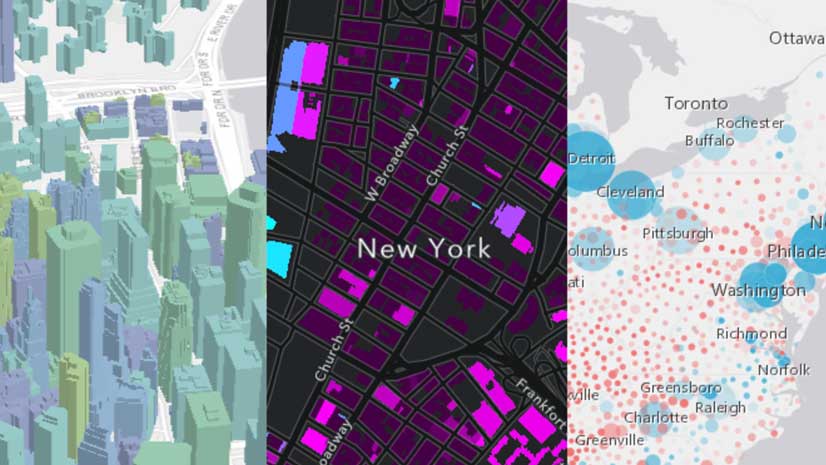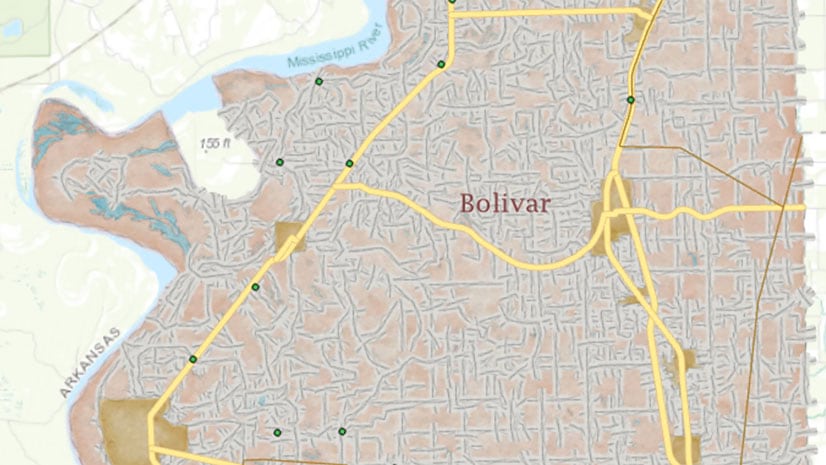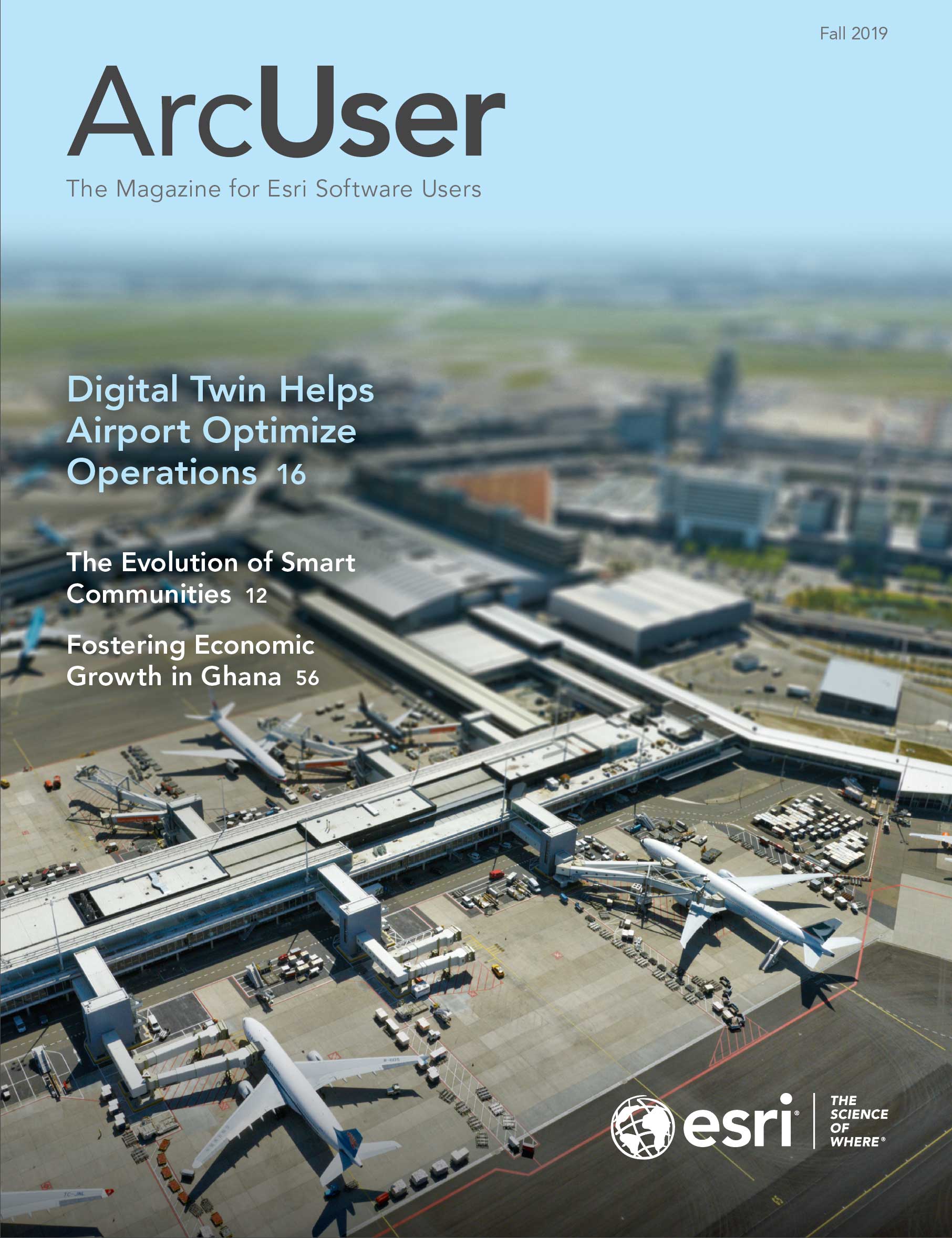The release of ArcGIS Runtime SDKs 100.6 is a major milestone in terms of the capabilities it adds and in how Esri will plan the content of releases going forward. This version introduces a track-focused road map.
For 100.6, these tracks are:
- Utilities
- Public safety and defense
- ArcGIS platform support
While these tracks were the drivers for the capabilities added at this release, the new capabilities have broad applications.
Work with ArcGIS Utility Network Management
For the first time, ArcGIS Runtime SDKs expose the capabilities of ArcGIS Utility Network Management extension, Esri’s new technology for managing, analyzing, and representing operational networks. You can now write mobile apps that not only allow you to display and interrogate networks, but also perform traces against them.
Esri provides APIs to read network properties and definitions and understand associations between network elements and between network elements and their geographic feature representations. APIs for network tracing were also added. Set one or more start points on a network (either on a junction or a terminal or along an edge), and (optionally) any number of barriers, and perform a trace. Traces are lightning fast but this only hints at future ArcGIS Utility Network Management capabilities.
At this release, all ArcGIS Utility Network Management capabilities are service based and require a network connection. More capabilities, including working offline, will be added in future releases. Additional ArcGIS Runtime SDK samples will be available to show you how to take advantage of this major new technology.
The previous release introduced annotation and reference scale, which support working with utilities. Annotation support is improved at the current release with the ability to take annotation services offline and work with annotation sublayers. Taking annotation offline is a read-only workflow for now. An ArcGIS Runtime SDK app can be updated by being synchronized with an annotation service. These capabilities will expand over the next few releases.
Navigation enhancements were also driven by utility customers but have a broad range of applications. Developers working with the ArcGIS Runtime SDKs have long been able to provide turn-by-turn directions, when connected and when offline, but developers have had to write a fair bit of custom code to provide an interactive navigation experience.
The new Navigation API makes it easy to integrate navigation directly into a ArcGIS Runtime app. Note: Using the Navigation API in a production app requires licensing an ArcGIS Runtime SDK at the Basic level. This release includes APIs to alert you of upcoming maneuvers. It also detects when you’ve wandered off route and automatically re-routes you when using a local network dataset.
Offline capabilities have been driven by the requirements of utilities apps but are applicable to so many other use cases. This version introduces scheduled updates, which augment the preplanned offline workflow by generating and storing periodic read-only delta updates on the server that are ready for clients to download. An ArcGIS Runtime app can check with the server to see which updates will make it current, download them, and apply them in sequence.
Scheduled updates take advantage of the preplanned offline workflow performance benefits of “generate once, distribute broadly.” A client won’t have to choose between waiting for the next scheduled full replica to be generated or kicking off a sync, which places a burden on the server and doesn’t scale the same way as the preplanned workflow does.
Scheduled update deltas can coexist alongside preplanned replicas. ArcGIS Runtime SDKs will intelligently make local data current by determining if it is better to download the latest replica or download a sequence of deltas. Adding support for scheduled updates adds access to an offline geodatabase’s generation ID. Now ArcGIS Runtime apps will cleanly close mobile map packages (MMPKs). Esri also included memory usage and performance improvements (particularly with symbology) when parsing MMPKs.
Over the last year, more than 300 people participated in AR/VR in ArcGIS Runtime, the augmented reality/virtual reality Esri Early Adopter program. With 100.6, those capabilities are out of beta and ArcGIS Runtime is AR enabled for iOS and Android devices.
Delivering a truly exceptional AR experience across a range of use cases requires customization, configuration, and calibration. To support that, Esri will be providing rich open source toolkit components to help build tabletop and full-scale AR experiences on top of the base components the ArcGIS Runtime SDKs expose.
Public Safety and Defense
Driven by a specific set of mission-critical requirements, public safety and military symbology must be highly readable and immediately recognizable. It must cover a range of expected and unexpected situations because the stakes for misreading a map often cannot be higher.
With 100.6, Esri introduces improved support for this symbology that is being built into the entire ArcGIS platform, which uses a dictionary renderer to access symbols in a style file and is powered by ArcGIS Arcade. This enhancement exposes complex attribute-driven rendering for use in any kind of app.
Use Arcade to define dictionary-driven, complex symbology using multiple feature attributes. For example, with a little Arcade customization, you can directly symbolize restaurants on the map and show not only locations and types but also ratings and whether a restaurant is currently open.
Many Open Geospatial Consortium, Inc. (OGC) services use parameter-based authorization schemes for access. Esri now supports the use of these authorization keys, as well as any custom parameters, for Web Feature Service (WFS), Web Map Service (WMS), and Web Map Tile Service (WMTS) layers.
With this release, you can modify a KML file or author one from scratch, save it, and share it with others directly from a ArcGIS Runtime SDK app. Note: Creating and editing a KML file in a production app requires licensing an ArcGIS Runtime SDK at the Standard level.
ArcGIS Platform Support
This release also adds capabilities that are driven by the ArcGIS platform:
- MMPKs now support Group layers.
- ArcGIS Runtime SDKs open WFS layers from a web map.
- You can identify and select features in a point scene layer.
Scene layers, feature layers, and graphics overlays can have a vertical offset defined for use in a scene.
Various line styles and symbology sets have been updated.
Esri has fixed multiple bugs and made improvements in performance and memory usage, particularly in the use of dictionary renderers, Arcade, and when working with MMPKs. See the release notes for Android, Qt, .NET, Java, and iOS SDKs for specific details.
Get Started
To get 100.6, go to the ArcGIS for Developers website, browse to the ArcGIS Runtime SDK page of your choice, and download the SDK. You can also reference it through NuGet, Gradle, or CocoaPods. If you’re new to developing with ArcGIS Runtime SDKs and don’t have an ArcGIS for Developers subscription, simply sign up for a free account. You’ll be able to access everything you need to develop your app.






